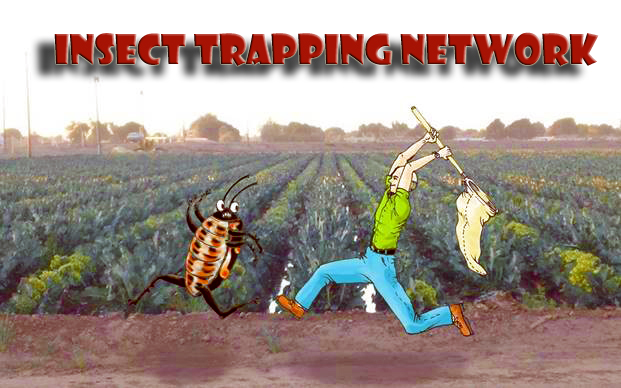
|
|
|
|

|
|||
|
|
|||
|
|
|||
|
Our area-wide trapping network is up and running. The project is designed to measure the activity and movement of adult populations of a number of
key pests. The project is being funded by the Arizona Iceberg Lettuce Research Council, and will hopefully provide an indication of when pest activity
(e.g., corn earworm moth flights) is increasing based on pheromone/sticky trap captures. The data is not intended to indicate field infestations, as
trap data is largely a reflection of adult movement. If nothing else, the data may make PCAs aware of increased pest activity in some areas and
encourage intensified scouting in susceptible produce fields. The pests being monitored include: corn earworm, tobacco budworm, beet armyworm, cabbage
looper using pheromone traps; aphids, thrips and whiteflies using yellow sticky traps. A total of 15 trapping locations have been established. Traps
will be checked weekly and data will be made available in the bi-weekly Vegetable IPM updates. If a PCA or grower is interested in weekly counts,
those can be made available by contacting us.
Results of pheromone and sticky trap catches can be viewed
here. Corn earworm: Moth activity continues to decline throughout the Yuma growing regions. Beet armyworm: Moth activity remains seasonally high, and counts are actually a little higher than this time last season in some areas. Cabbage looper: Cabbage looper moths remain active, particularly in the Gila Valley. Whitefly: Adult movement has slowed significantly in most areas, and overall movement is absent. Thrips: To date, thrips activity has been seasonably low at most trap locations, tending similar to last season. Aphids: Aphid flights are continuing and trap counts decreasing in most areas. Leafminers: Adult activity remains seasonably low in all locations. Diamondback moth: Diamondback moth (DBM) counts in pheromone traps have increased in all trap locations over the past two weeks. Trap counts in the Wellton/Dome Valley,Gila Valley, North Yuma Valley and Bard/Winterhaven locations are actually higher than this time last season. (See DBM Trap Network)). However, to date this fall counts are much lower than what we experienced in spring 2017. (See DBM Trap Network). 
To contact John Palumbo go to: jpalumbo@ag.arizona.edu
|
|||
| Back | |||
|
For questions or comments on any of the topics please contact Marco Pena at the Yuma Agricultural Center.
|
|||
|
Home |
Cotton | Veggies |
Forages | Grains
| Citrus |
Crop x Crop Insects | Diseases| Weeds | Pesticides | Economics | News | Weather | Research | Photos | Contacts | General Info. Copyright © 2001 University of Arizona, College of Agriculture and Life Sciences Webmaster: Al Fournier (acis@ag.arizona.edu) |
|||